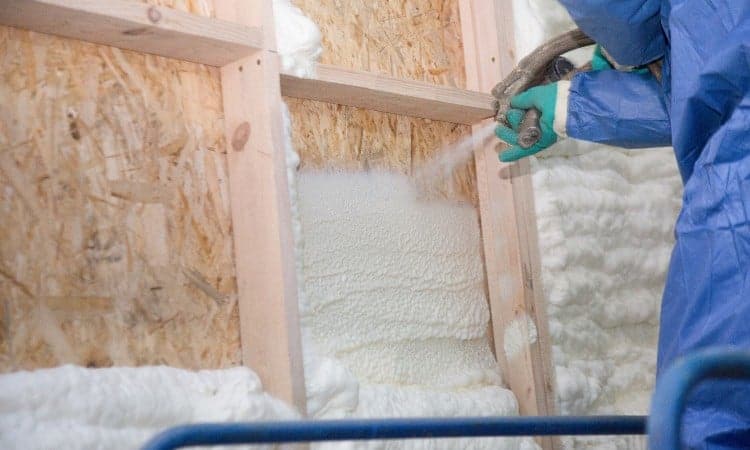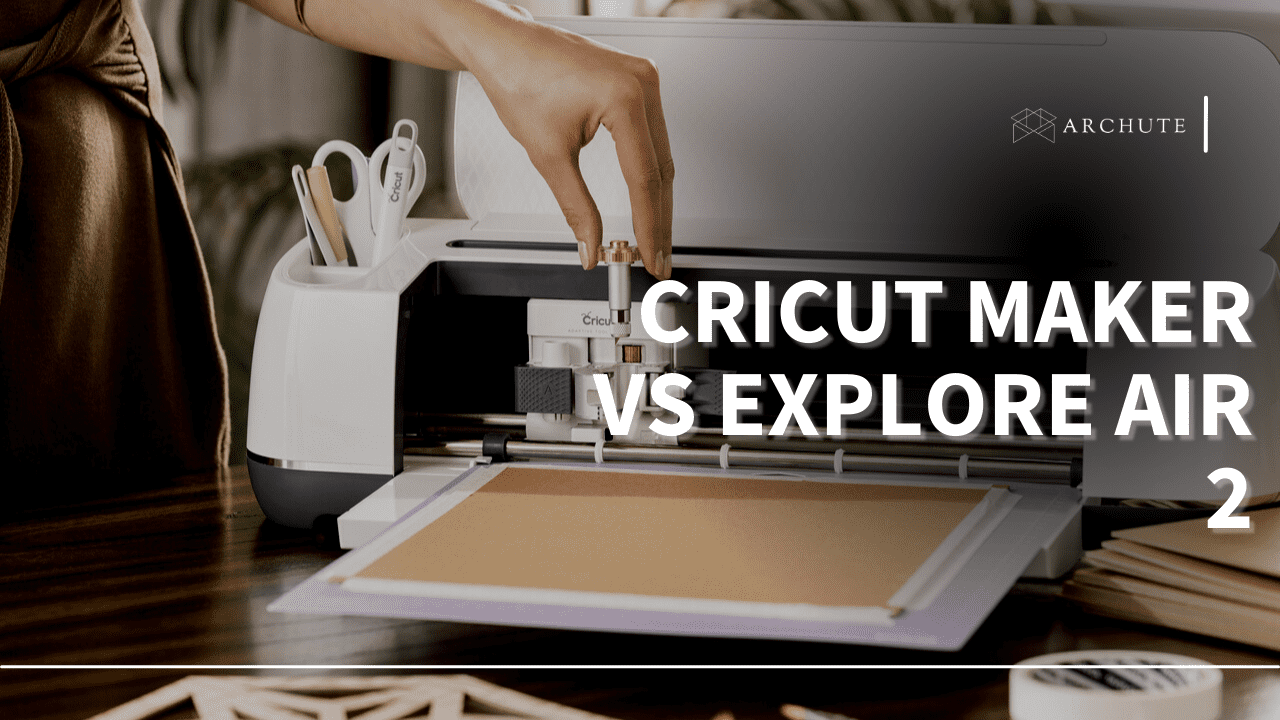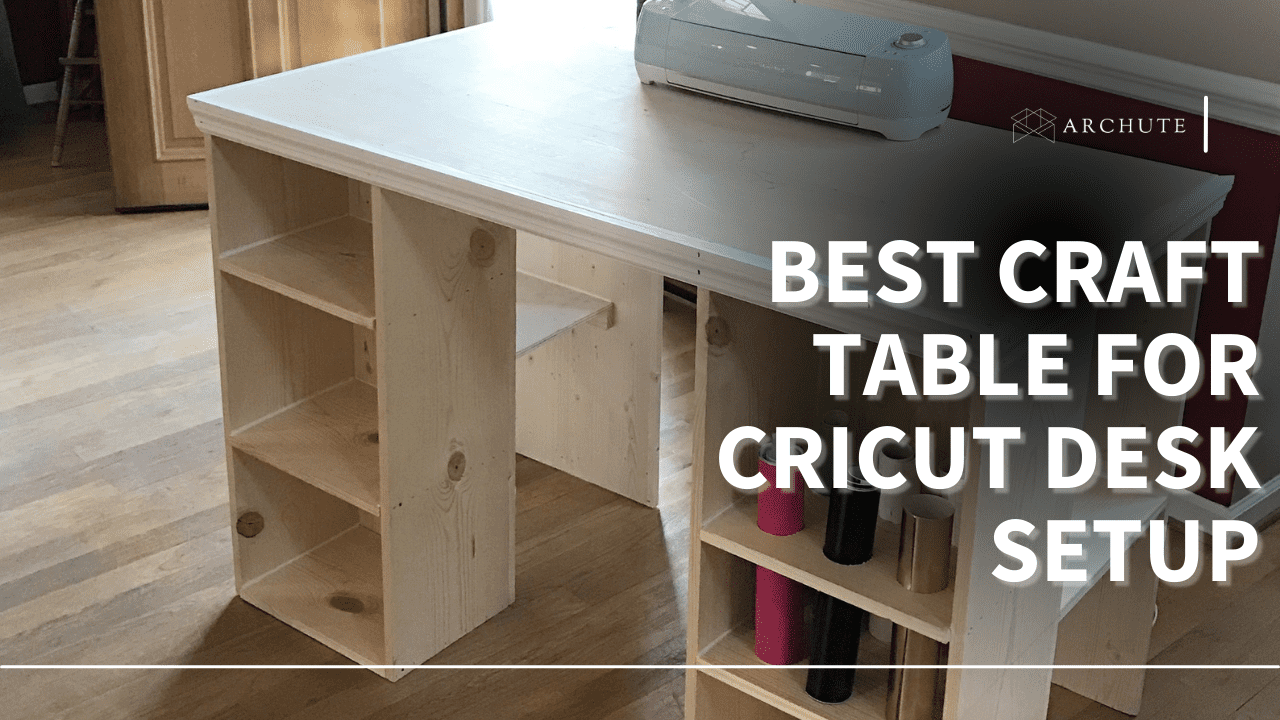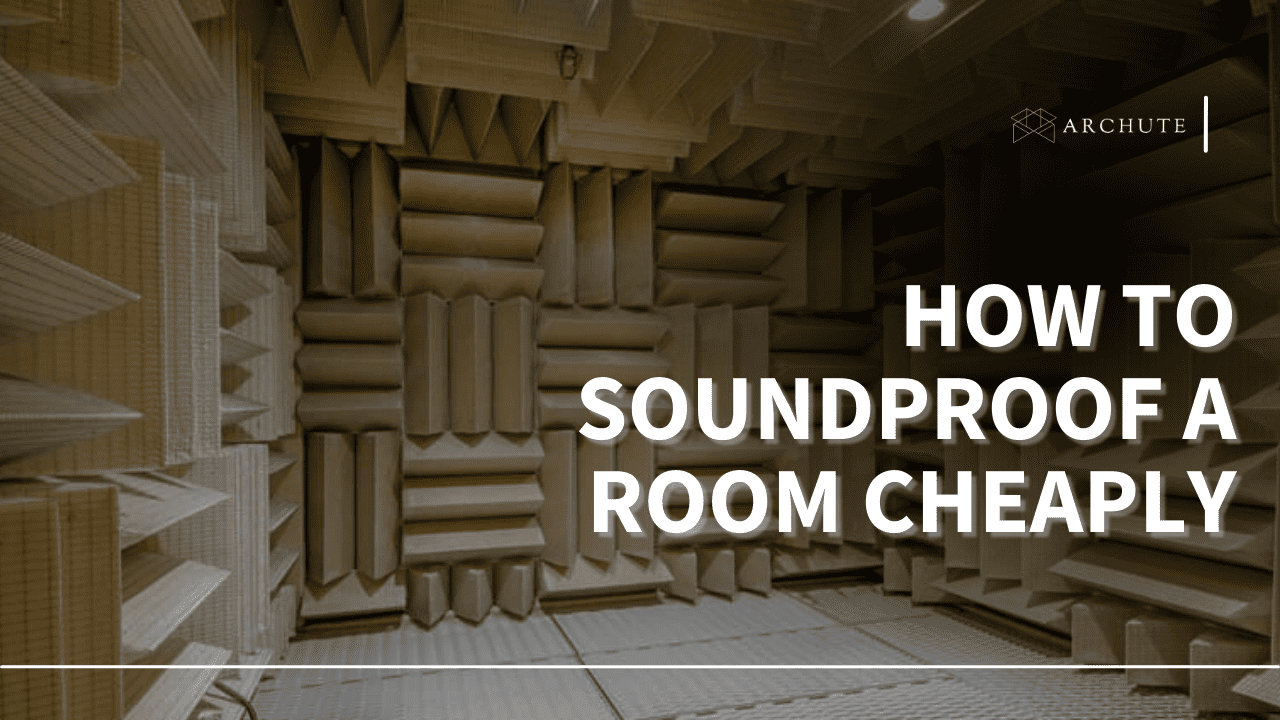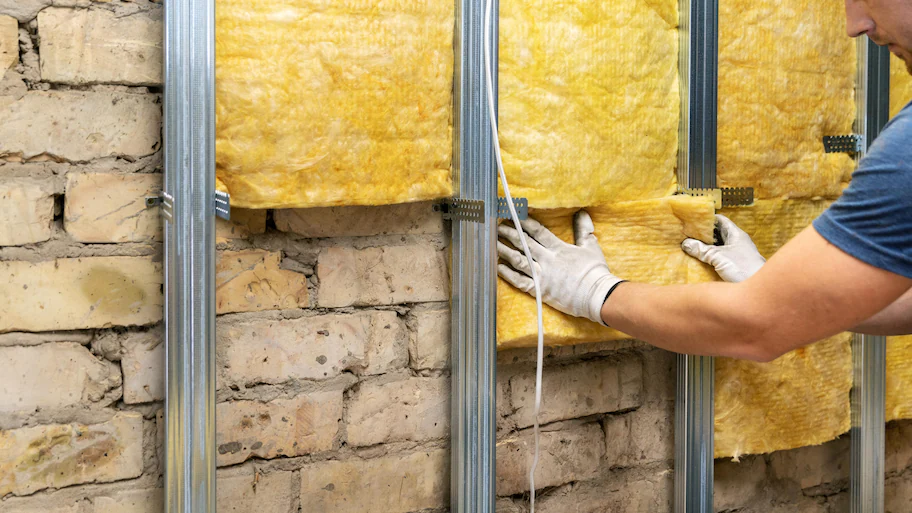As the distance between neighbors has gotten closer, blocking or reducing sound transfer in new or existing construction is more crucial than ever. So are you looking for soundproofing spray foam for existing walls? If so, it is necessary to learn some information before setting it up.
A major advantage of using soundproofing spray foam to minimize unwanted exterior noise in your home is how simple it is to install. It may be installed in existing walls without removing or harming the drywall. We have come up with a detailed guide below to help you understand it better. Dive in!
What is a Soundproofing Spray Foam?
Soundproofing spray foam, also called spray foam insulation or polyurethane foam, is an expanding foam mostly used for insulation and soundproofing.
Spray foam is a popular construction material used for wall thermal insulation in home construction, and it can be bought in most hardware, maintenance stores, and building supply centers.
Although its main purpose is to keep your home warmer during the winter and keep it cool during the summer, it's suitable for sealing gaps where noise and air could slip through. It works well to control noise because it creates an extra sound barrier between connecting walls, and it should be done correctly to avoid the expanding foam causing bulges.
How Does Spray Foam Work?

Image Credit: soundproofingtips.com
Soundproofing existing walls can be cheap or expensive, depending on the sound-deadening level you are looking for. In addition, you will need to consider the shape and size of the room since large rooms produce noticeable echoes and reverb.
Spray foam is simple to use and may be used in different situations. For example, it can be applied to existing walls and the undersides of roofs by drilling small holes and inserting the foam inside.
Not only does it work perfectly for soundproofing, but it's also a good insulator, which keeps your home warm and thus reduces your energy bills by up to 50%.
1. Loctite TITE FOAM Insulating Foam Sealant
- EXPANDS TO FILL: Loctite TITE FOAM Gaps & Cracks fills, seals,...
- SUPERIOR FLEXIBILITY: Withstands building and material movement...
- STRONG ADHESION: Sealant bonds to most building materials like...
- UV RESISTANCE: Withstands harsh UV rays for long lasting results
- STRAW APPLICATOR: For application simply use the attached straw...
Loctite foam sealant is one of the best solutions for sealing cracks and gaps where the product expands to fill spaces as large as three inches. In addition, we discovered that it could be used in different places apart from existing walls, including baseboards, windows, doors, crawlspaces, HVAC ductwork, and many more.

Image Credit: lowes.com
This spray foam insulation offers flexibility but still high density, and even with movement in building materials, the seal will not be fully compromised. Also, you won't have to worry about doors or windows bowing after application.
The Loctite foam sealant is made of a polyurethane-based material that expands to seal and fill gaps. Other users claim it is quite easy to use and can be continuously applied to different projects. Lastly, this open-cell foam has a strong adhesive, allowing it to bond with stone, wood, concrete, and many more.
Pros:
Cons:
2. Great Stuff Window and Door Insulating Foam
- 2 Pack of 16 Ounce
- New Quick Stop straw technology - helps stop messy foam drips
- GREAT STUFF window and door’s proprietary low-pressure formula...
- Detiene los proyectos, mantener el calor en su hogar durante el...
- Repels/deflects water and is tack free in 8 minutes; trims within...
Great Stuff insulating foam is an excellent and affordable way to seal air leaks in your home if you are looking for the best spray foam insulation for existing doors, skylights, and windows. The foam sealant instantly offers a clean and quick water-resistant seal where it's flexible, making it apply to any surface.
The sound-deadening foam can be used between a framework or more rough openings, and after application, you will find your doors, skylights, and windows more resistant to the elements.

Image Credit: spy.com
Great Stuff soundproofing foam is a water-resistant and airtight closed-cell spray foam. It was formulated to be soft yet flexible even after curing since it minimally expands with a low-pressure build.
In addition, since the noise reduction spray is durable, we guarantee that it will form a tight seal that can easily stop the drafts and air coming through a door or window to block some sounds.
Pros:
Cons:
What are the Types of Soundproofing Spray Foam?
The types of spray foam insulation are both made of two components that mix when sprayed into cavities or walls they expand before they harden.
Open-cell spray foam is delicate and can be easily crushed, so the product also has a lower insulation value. On the other hand, closed-cell foam insulation is rigid since every single air cell is sealed. As a result, it has a high R-value but is more expensive than the open-cell spray foam.

Image Credit: reddit.com
a). Open-Cell Spray Foam
Open-cell foam is also known as half-pound foam insulation, and it is semi-rigid with a sponge-like appearance. It expands during the application, creating small open cells full of carbon dioxide.
The open-cell spray foam is the opposite of the closed-cell foam since it's light and can expand up to three inches. This type is suitable for filling cracks, crevices, and voids, which stick to irregular surfaces and substrates to create airtight sealing insulation.
This type is suitable for general soundproofing thanks to its thickness, and it also costs less than closed-cell foam insulation. Therefore, if you want open-cell foam for home improvement purposes, ensure the one you choose has high performance for sound reduction and thermal insulation.
b). Closed-Cell Spray Foam
Closed-cell foam is rigid, heavy, and dense. It's made of polyurethane with closed cells. Closed cell foam has a compact structure that takes in limited air and heat amounts that pass through it. It is water-resistant and will help to keep your room's interiors free of moisture accumulation on surfaces.
Compact closed-cell foam allows only a small amount of foam expansion, about an inch. This is important because it helps to maintain dense and firm foam quality to reinforce wall construction and seal cracks.
How to Use Noise Control Spray Foam on Existing Walls?

Image Credit: greatstuff.dupont.com
There are three successful yet economical ways to use soundproofing control spray on existing walls, and they include:
1. Sealing Wall Cracks and Crevices
Your walls' gaps and crevices allow for the passage of about 50% of the usual noise. You can have a more peaceful home environment by using efficient spray foam to seal these weak points and holes.
You can add more soundproofing materials if you'd like when the foam swells, fills in all the cracks and dries. The materials may include soundproofing paint, acoustic foam panels, and wallpaper.
To increase the absorption of interior room noise, you can combine it with acoustic foam panels. So, when you suppress interior and exterior sound, you will improve the quality of your rooms to allow comfortable sleeping, reading, conversation, or studying.
2. Apply Spray Foam between Drywall
Applying the sound-deadening spray foam between the drywall can reduce noise vibrations from exterior walls. In addition, the spray foam between the drywall will help absorb and lower the sound wave level, making your room calm and more inviting.
However, ensure you use open-cell foam spray for excellent filling and sealing cracks that let outside noise enter your room's interior. Newbies to home soundproofing techniques may find using spray foam time-consuming and messy.
With patience, you will realize its effectiveness and cost savings as a soundproofing method.
3. Use Foam Spray around Acoustic Panels
If you are installing acoustic spray foam panels on a wall, you should try spraying foam on the edges of every separate panel. If you are using these sets of panels to work on a large area of a wall, it helps to spray around the whole set of panels.
This will close up any small cracks, gaps, or crevices and help decrease or prevent the sound level from getting transferred from outside.
Alternatively, you can close the cracks and gaps with spray foam insulation before you install the acoustic panels, but you will need to wait for the spray foam to dry before you apply the panels.
The foam noise reduction spray foam is versatile because it can be used together with sound suppression paint to get perfect results.
How to Maximize the Noise Reduction Results from Soundproofing Spray Foam in Existing Walls?

Image Credit: HouseImprovements
Since walls are made of hard surfaces, noise and vibrations can travel through them easily. When spongy-like, soft, and pliable materials are applied, you can easily get quality soundproofing. The foam panels used for noise dampening are made of flexible, soft, absorbent polyurethane, which minimizes the echoes and initial sounds.
Soundproofing spray foam can provide quality sound deadening, but it gives a legit foundation when used with other sound suppressing methods. The foam spray is perfect for enhancing and supporting the efficiency of other methods for a successful reduction of sound waves and great absorption.
How is Spray Foam Insulation Beneficial?
- Excellent Soundproofing, which improves privacy without getting bothered by outside noises
- Improved health and life quality since its made of water which makes it eco-friendly for your home
- Easy Installation since you don't have to tear down existing walls
- Lower Energy Costs since the foam allows the house to feel more relaxed during extreme temperatures meaning you save money on energy bills
- Effective spray foam for thermal insulation
- Provides a moisture and air barrier
- Versatile as the foam can be used on walls, wall cavities, ceilings, and crevasses
What are the Disadvantages of Spray Foam Insulation?
- Provides limited sound absorption
- Increases the feedback, reflective resonance, and sound distortion
- It is messy and can be harmful to one's health
- Non-existent or limited sound absorption properties
- It can be expensive
What are Spray Foam Sound Ratings?
It is important to understand acoustic spray foam sound ratings because when you measure sound intensity, there are some metrics and values you will need to follow. This is necessary since it allows you to make the proper choices for your needs.
Regarding sounds, the two important measurements are hertz and decibels, where hertz measures frequency and decibels measures the intensity of sounds. However, apart from decibels and hertz, you will need to measure NRC(Noise Reduction Coefficient) and STC (Sound Transmission Class).

Image Credit: soundproofanything.com
Sound transmission class measures how effectively a material reduces or blocks sound waves. The higher the STC rating, the less noise will pass through, which is a great indicator of a good sound dampening material.
On the other hand, the noise reduction coefficient measures how effectively a material reflects or absorbs sound waves. This is measured in hertz, where the greater the number, the better the soundproofing properties.
Once applied, an open cell soundproofing foam expands three inches and has an STC of up to 39 and an NRC of 0.70. On the other hand, closed cell spray foams only expand an inch when applied with an STC of 36 and an NRC of 0.70.
Conclusion

Image Credit: touch and seal
Although soundproofing spray foam for existing walls is not the best solution for blocking external sound, it reduces noise levels caused by sound waves entering your home's walls. However, using it with other noise-dampening and soundproofing materials qualifies as a superior foundation to build on.
This method forms a powerful seal on the borders of acoustic foam panels to improve soundproofing methods. In addition, they are used with soundproofing paint, making it a noise reduction plan that will also work well in the future.
Frequently Asked Questions Soundproofing Spray Foams
1. Is there a Difference Between Sound Deadening and Soundproofing?
Soundproofing a room blocks all unwanted noises from entering the room, and no airborne noise from outside the room can enter through flooring, walls, or ceilings. However, sound deadening covers up sound transfer into your room. An injection foam in your walls will help lower the sound transmission by about 80%.
2. What are Other Ways of Soundproofing Existing Walls with Insulation?
If you are looking for other methods of soundproofing walls, there are several options to check out, and they include:
- Fiberglass Insulation
- Soundproofing panels
- Dense Packed Cellulose
- Soundproofing curtains
- Mineral Wool
- Soundproofing paint
- Batt Fiberglass Insulation
- Mass loaded vinyl
- QuietRock Sheetrock
3. Does the spray foam insulation work well for Soundproofing?
Most exterior walls are designed in a better way to decrease sound transfer and insulate, while interior walls are left hollow. While spray foam insulation works, it's not as effective.
Although open-cell foams absorb sound better than closed-cell spray foams, none can decouple the wall layers. Spray foam adheres to a couple of wall layers, making it easier for noise to move through by increasing the sound transfer and disruptive resonance.
Image Credit: weekendbuilds.com

